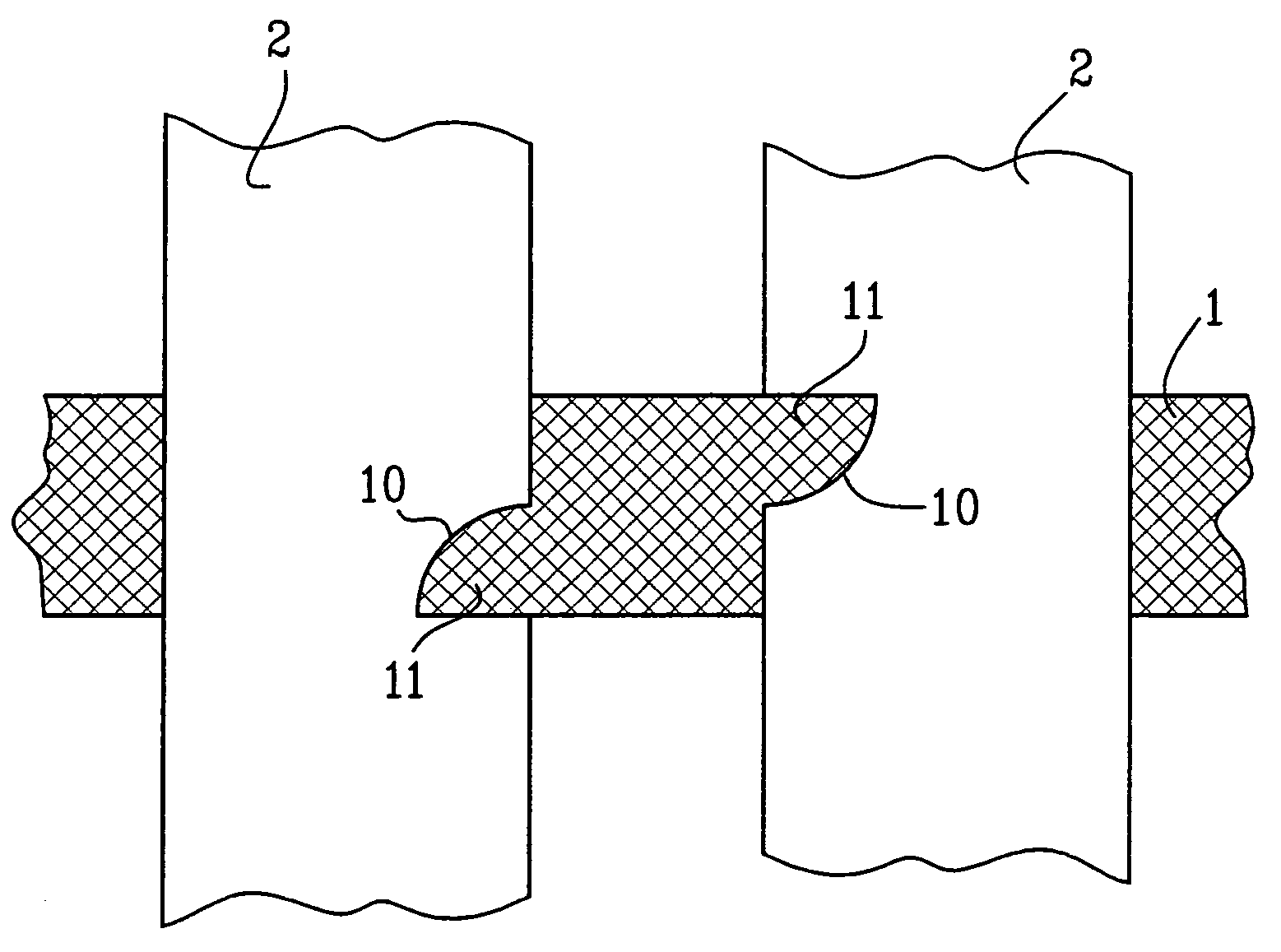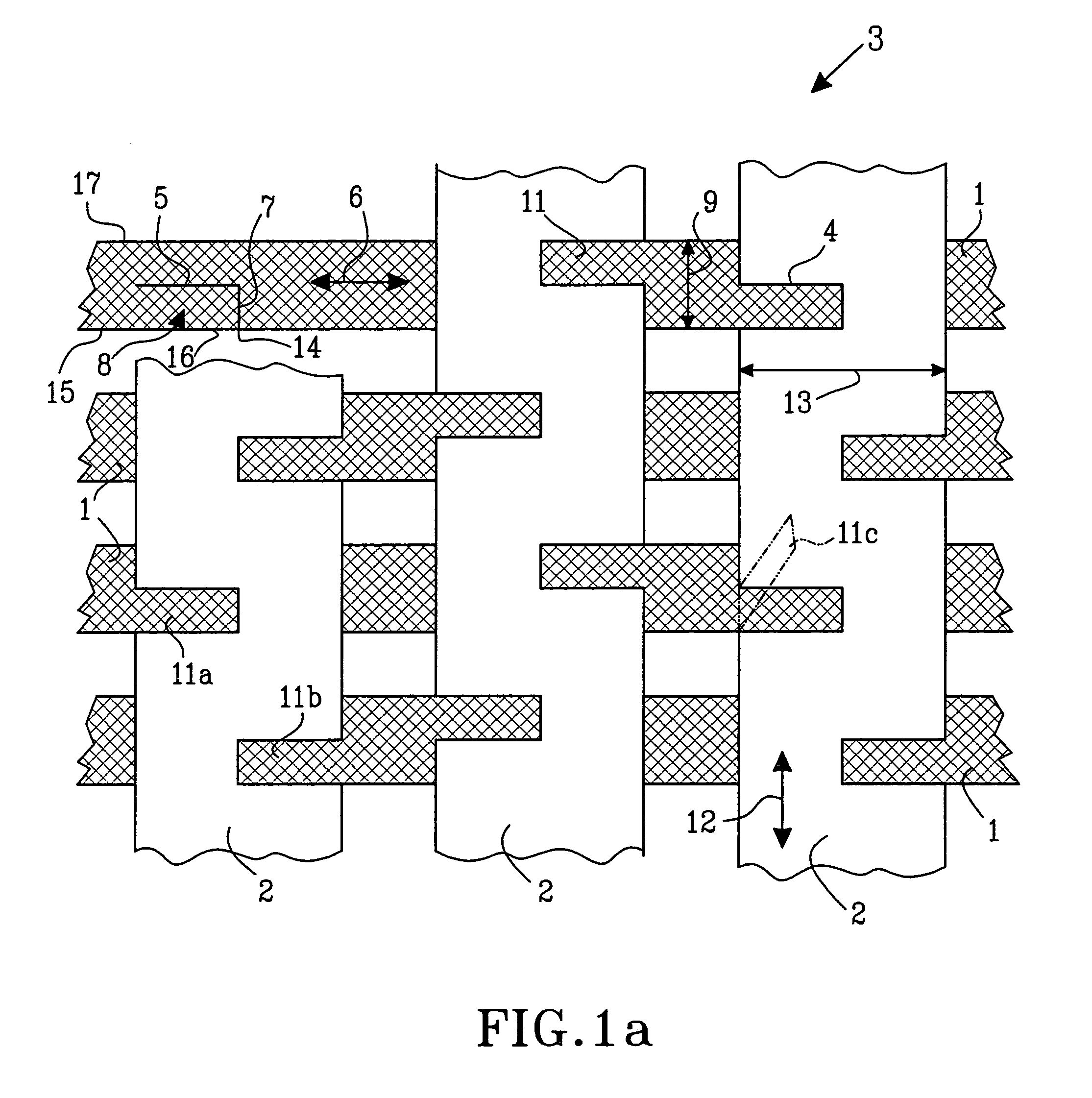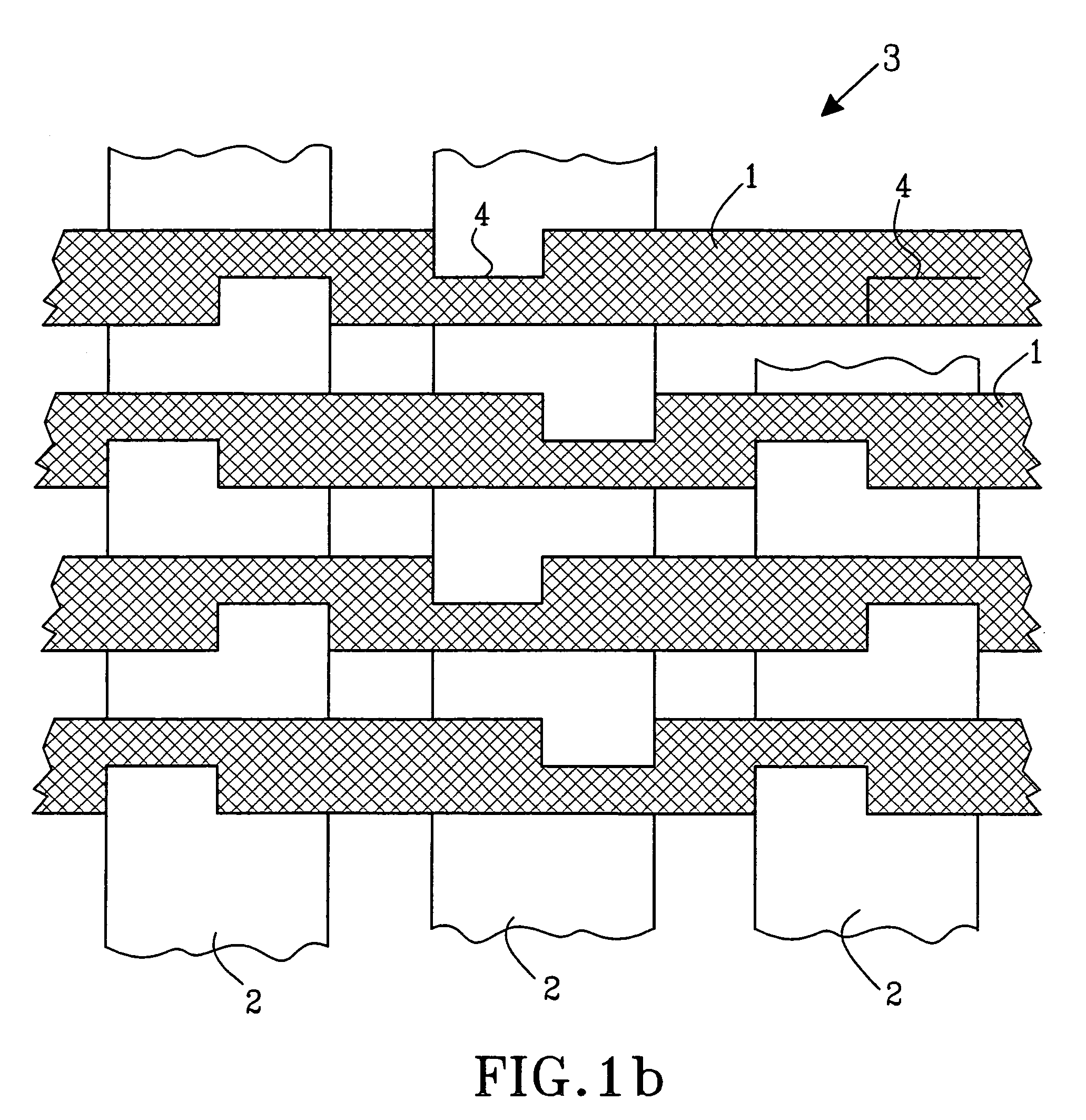Absorbent structure and a method for manufacturing an absorbent structure
a technology of absorbent body and manufacturing method, which is applied in the field of absorbent body and a manufacturing method of absorbent body, can solve the problems of complex manufacturing method, less comfortable use, less flexible and ductile product, etc., and achieve the effect of increasing the fluid acquisition capacity and good absorption of fluid
- Summary
- Abstract
- Description
- Claims
- Application Information
AI Technical Summary
Benefits of technology
Problems solved by technology
Method used
Image
Examples
example 1
[0039]An above-mentioned first strip consists of 285 g / m2 CP, 50 g / m2 superabsorbent of a conventional type and 15 g / m2 polypropylene. The components are blended and compressed, and are formed into a strip having 2 mm thickness and 15 mm width.
[0040]An above-mentioned second strip is a laminate and consists of 400 g / m2 superabsorbent of a conventional type which is arranged between two tissue layers, 20 g / m2 each. The strip is manufactured having a total thickness which is 1 mm and a width which is 15 mm.
example 2
[0041]An above-mentioned first strip consists of 125 g / m2 CP and 50 g / m2 superabsorbent of a conventional type. The components are blended and compressed, and are formed into a strip having 0.5 mm thickness and 15 mm width.
[0042]An above-mentioned second strip is a laminate and consists of 400 g / m2 superabsorbent of a conventional type which is arranged between two tissue layers, 20 g / m2 each. The strip is manufactured having a total thickness which is 1 mm and width which is 15 mm.
example 3
[0043]An above-mentioned first strip consists of 125 g / m2 CP and 50 g / m2 superabsorbent of a conventional type. The components are blended and compressed, and are formed into a strip having 1 mm thickness and 15 mm width.
[0044]An above-mentioned second strip consists of 175 g / m2 CP, 70 g / m2 superabsorbent of a conventional type. The components are blended and compressed, and are formed into a strip having 3 mm thickness and 15 mm width.
[0045]An embodiment according to the invention for manufacturing an absorbent body comprises the steps of coupling a set of first strips 1 and a set of second strips 2 to each other in order to form an absorbent layer 3 of the body and, furthermore, that the first 1 and second 2 strips are coupled to each other by means of providing the first strips with cuts 4, in which cuts 4 the second strips 2 are arranged. In one advantageous embodiment, the cuts 4 are designed so that flaps 11 which can be turned up and down in relation to the first strips 1 are...
PUM
| Property | Measurement | Unit |
|---|---|---|
| width | aaaaa | aaaaa |
| width | aaaaa | aaaaa |
| width | aaaaa | aaaaa |
Abstract
Description
Claims
Application Information
 Login to View More
Login to View More - R&D
- Intellectual Property
- Life Sciences
- Materials
- Tech Scout
- Unparalleled Data Quality
- Higher Quality Content
- 60% Fewer Hallucinations
Browse by: Latest US Patents, China's latest patents, Technical Efficacy Thesaurus, Application Domain, Technology Topic, Popular Technical Reports.
© 2025 PatSnap. All rights reserved.Legal|Privacy policy|Modern Slavery Act Transparency Statement|Sitemap|About US| Contact US: help@patsnap.com



